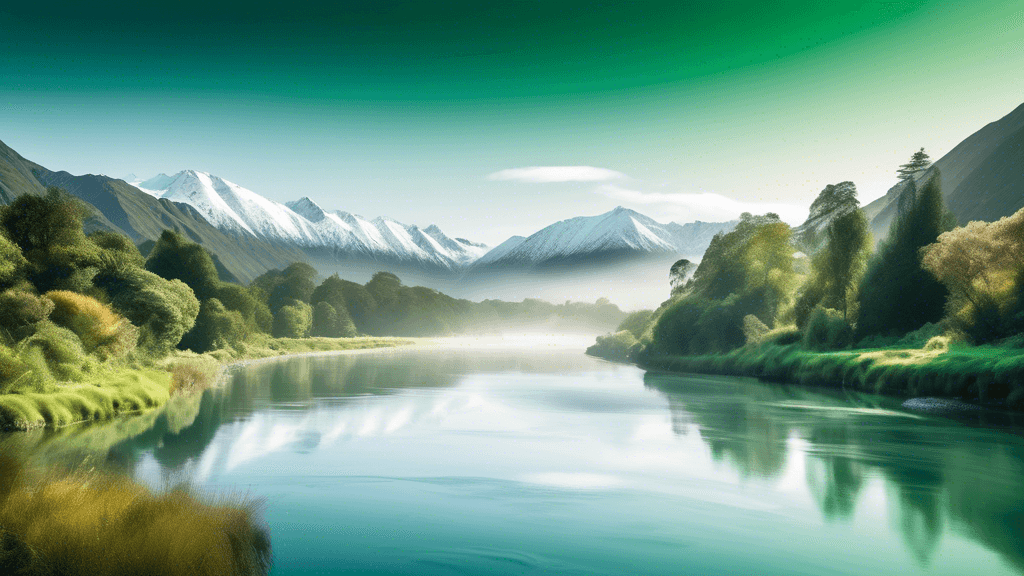
Capturing Flow: River and Stream Photography in New Zealand
Share
The Art of River and Stream Photography in New Zealand
New Zealand, with its vast wilderness and pristine bodies of water, provides countless opportunities for photographers to capture the intricate dynamics of rivers and streams. This blog targets both amateur and professional photographers who are passionate about nature and want to explore and improve their techniques in river and stream photography, especially within the stunning landscapes of New Zealand.
Understanding the Subject: The Diverse Waterways of New Zealand
New Zealand's rivers and streams are more than just water paths; they are dynamic ecosystems and natural artworks. From the swiftly flowing streams in the Canterbury Plains to the thunderous rivers in the Fiordland National Park, these bodies of water present photographers with both a challenge and an opportunity to capture their majestic beauty.
Why Focus on Rivers and Streams?
Photographing rivers and streams involves understanding the subject's essence, which is shaped by the interplay of several environmental factors. But why should photographers look to rivers and streams in New Zealand as a focal point? Here are a few compelling reasons:
- Diversity in Scenes: New Zealand's varied climate zones contribute to a diverse range of river environments, from serene, glistening streams to dramatic, fast-paced river rapids.
- Seasonal Dynamics: The appearance and mood of rivers change with the seasons, offering photographers a myriad of perspectives of the same scene at different times of the year.
- Ecological Significance: Rivers are vital ecological zones. Capturing these environments can raise awareness about their importance and vulnerabilities.
Essential Techniques in River and Stream Photography
Photography, at its core, is about mastering light, composition, and perspective. However, when it comes to capturing rivers and streams, several specific techniques can enhance the visual impact of your photographs:
- Long Exposure: To convey the flow of water, long exposure is a crucial technique. It smoothes the water's surface and captures movement in a still image, giving the water a misty, ethereal appearance.
- Polarizing Filters: This tool helps reduce reflections and glare on the surface of the water, allowing for clearer, more saturated colors and enhancing the visibility of underwater features.
- Optimal Lighting: Overcast days can be optimal for river photography as the diffused light reduces highlights and shadows in the water, providing a balanced light for exposure.
Spotlight on Famous Locations
Several locations in New Zealand are famous for their breathtaking river scenes. Notable among these is the Waimakariri River, which offers stunning views against the backdrop of the Southern Alps. Another noteworthy mention is the Waikato River, the longest river in New Zealand, known for its historical significance and beautiful waterfalls.
Challenges and Ethical Considerations
Capturing the perfect shot of a river or stream is not without its challenges. Weather conditions, accessibility, and safety are significant concerns. Moreover, photographers must practice ethical photography by respecting the natural habitat and ensuring that their presence does not disturb the ecosystem.
The ethics of photography is to respect and preserve, says John Tan, a conservation photographer. When we photograph nature, we are also its guardians.
Conclusion
Photography is not just about capturing what you see; it's about conveying a story through your lens. New Zealand’s rivers and streams, with their unspoiled beauty and dynamic character, provide a fantastic canvas for photographers to tell powerful stories of nature and preservation.
If you’re seeking to expand your photography skills, embrace the challenge of river and stream photography. Explore the diverse landscapes of New Zealand, use the techniques recommended, and most importantly, connect with the environment. Your images could advocate for the conservation of these beautiful yet fragile ecosystems.
So, why not start planning your next photography adventure and see what stories you can capture through your lens?





